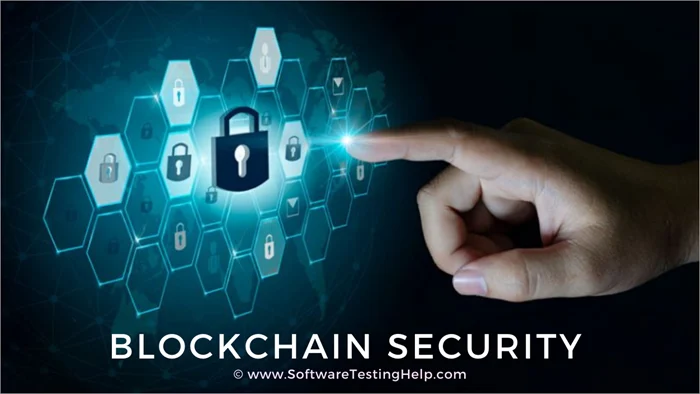In an era where digital threats are becoming increasingly sophisticated, understanding The Role of Blockchain in Shaping Digital Security is more crucial than ever. Blockchain technology, known for its decentralized and immutable nature, offers a revolutionary approach to safeguarding sensitive information. By leveraging cryptographic principles, blockchain not only enhances data integrity but also fosters trust among users, making it a pivotal player in the realm of digital security.
This article delves into the various ways blockchain is transforming digital security landscapes. You will discover how blockchain can mitigate risks associated with data breaches, identity theft, and fraud. Furthermore, we will explore real-world applications of blockchain in sectors such as finance, healthcare, and supply chain management, illustrating its potential to create secure and transparent systems. As we navigate through these topics, you will gain insights into the challenges and limitations of blockchain technology, equipping you with a well-rounded understanding of its impact on digital security.
As you continue reading, prepare to uncover the future of digital security shaped by blockchain innovations. Whether you are a tech enthusiast, a business leader, or simply curious about emerging technologies, this exploration will provide valuable knowledge and inspire you to consider how blockchain can be integrated into your own security strategies. Join us on this journey to understand the profound implications of blockchain in creating a safer digital world.
Blockchain technology has emerged as a revolutionary force in the realm of digital security. Its decentralized nature and cryptographic principles provide a robust framework for securing data and transactions. This article explores various aspects of how blockchain is shaping digital security.
Decentralization and Its Impact on Security
Decentralization is one of the core principles of blockchain technology. Unlike traditional systems that rely on a central authority, blockchain distributes data across a network of nodes. This distribution significantly reduces the risk of a single point of failure, making it more resilient to attacks. In a decentralized system, even if one node is compromised, the integrity of the entire network remains intact.
Moreover, decentralization enhances transparency. Each transaction is recorded on a public ledger, allowing users to verify the authenticity of data without relying on a central authority. This transparency builds trust among users and reduces the likelihood of fraud, which is a critical aspect of digital security.
Cryptographic Security Features
Blockchain employs advanced cryptographic techniques to secure data. Each block in the chain contains a unique hash of the previous block, creating an immutable record of transactions. This cryptographic linkage ensures that any attempt to alter a block would require changing all subsequent blocks, which is computationally infeasible.
Additionally, public and private key cryptography is used to secure transactions. Users possess a private key that allows them to sign transactions, while the public key enables others to verify the authenticity of those transactions. This dual-key system enhances security by ensuring that only authorized users can initiate transactions.
Smart Contracts and Automated Security
Smart contracts are self-executing contracts with the terms of the agreement directly written into code. They operate on blockchain networks and automatically enforce the terms when predefined conditions are met. This automation reduces the need for intermediaries, minimizing the risk of human error and fraud.
By utilizing smart contracts, organizations can enhance their security protocols. For instance, in financial transactions, smart contracts can ensure that funds are only released when specific conditions are satisfied, providing an additional layer of security against unauthorized access.
Identity Management and Verification
Blockchain technology offers innovative solutions for identity management. Traditional identity verification methods are often vulnerable to data breaches and identity theft. Blockchain provides a decentralized identity system where users control their own data, reducing the risk of unauthorized access.
With blockchain, individuals can create a digital identity that is secure and verifiable. This identity can be used across various platforms without the need to share sensitive personal information, thereby enhancing privacy and security in digital interactions.
Enhancing Supply Chain Security
Blockchain technology is transforming supply chain management by providing end-to-end visibility and traceability. Each transaction in the supply chain can be recorded on the blockchain, allowing stakeholders to track the movement of goods in real-time.
This transparency helps in identifying potential security threats, such as counterfeit products or unauthorized access to sensitive information. By ensuring that all parties have access to the same data, blockchain enhances trust and security within the supply chain ecosystem.
Cybersecurity and Threat Mitigation
As cyber threats continue to evolve, blockchain technology offers a promising solution for enhancing cybersecurity. Its decentralized nature makes it difficult for hackers to target a single point of failure. Additionally, the immutability of blockchain records ensures that any unauthorized changes can be easily detected.
Organizations can leverage blockchain to create secure networks that are resistant to attacks. By integrating blockchain with existing cybersecurity measures, businesses can enhance their overall security posture and mitigate potential threats.
Regulatory Compliance and Data Protection
Compliance with data protection regulations is a significant concern for organizations. Blockchain technology can facilitate compliance by providing a transparent and immutable record of data transactions. This transparency allows organizations to demonstrate accountability and traceability in their data handling practices.
Furthermore, blockchain can help organizations manage consent for data sharing. Users can grant or revoke access to their data through smart contracts, ensuring that their privacy is maintained while complying with regulations such as GDPR.
Future Trends in Blockchain Security
The future of blockchain in digital security is promising, with ongoing advancements in technology. Emerging trends such as interoperability between different blockchain networks and the integration of artificial intelligence are expected to enhance security further.
As organizations continue to adopt blockchain solutions, the focus will shift towards developing more robust security protocols and standards. This evolution will not only improve digital security but also foster greater trust in blockchain technology across various industries.
| Aspect | Description |
|---|---|
| Decentralization | Blockchain operates on a decentralized network, reducing the risk of a single point of failure and enhancing security against attacks. |
| Immutability | Once data is recorded on the blockchain, it cannot be altered or deleted, ensuring the integrity and authenticity of information. |
| Transparency | All transactions on the blockchain are visible to all participants, promoting accountability and trust among users. |
| Cryptographic Security | Blockchain uses advanced cryptographic techniques to secure data, making it extremely difficult for unauthorized users to access or manipulate information. |
| Smart Contracts | These self-executing contracts with the terms of the agreement directly written into code enhance security by automating processes and reducing human error. |
| Identity Verification | Blockchain can provide secure and verifiable digital identities, reducing fraud and enhancing security in online transactions. |
| Supply Chain Security | By tracking products on a blockchain, companies can ensure the authenticity and security of their supply chains, reducing the risk of counterfeit goods. |
| Data Privacy | Blockchain can enhance data privacy by allowing users to control their own data and share it selectively, reducing the risk of data breaches. |
This HTML document provides a structured overview of the role of blockchain in shaping digital security, presented in a clear and informative table format.



